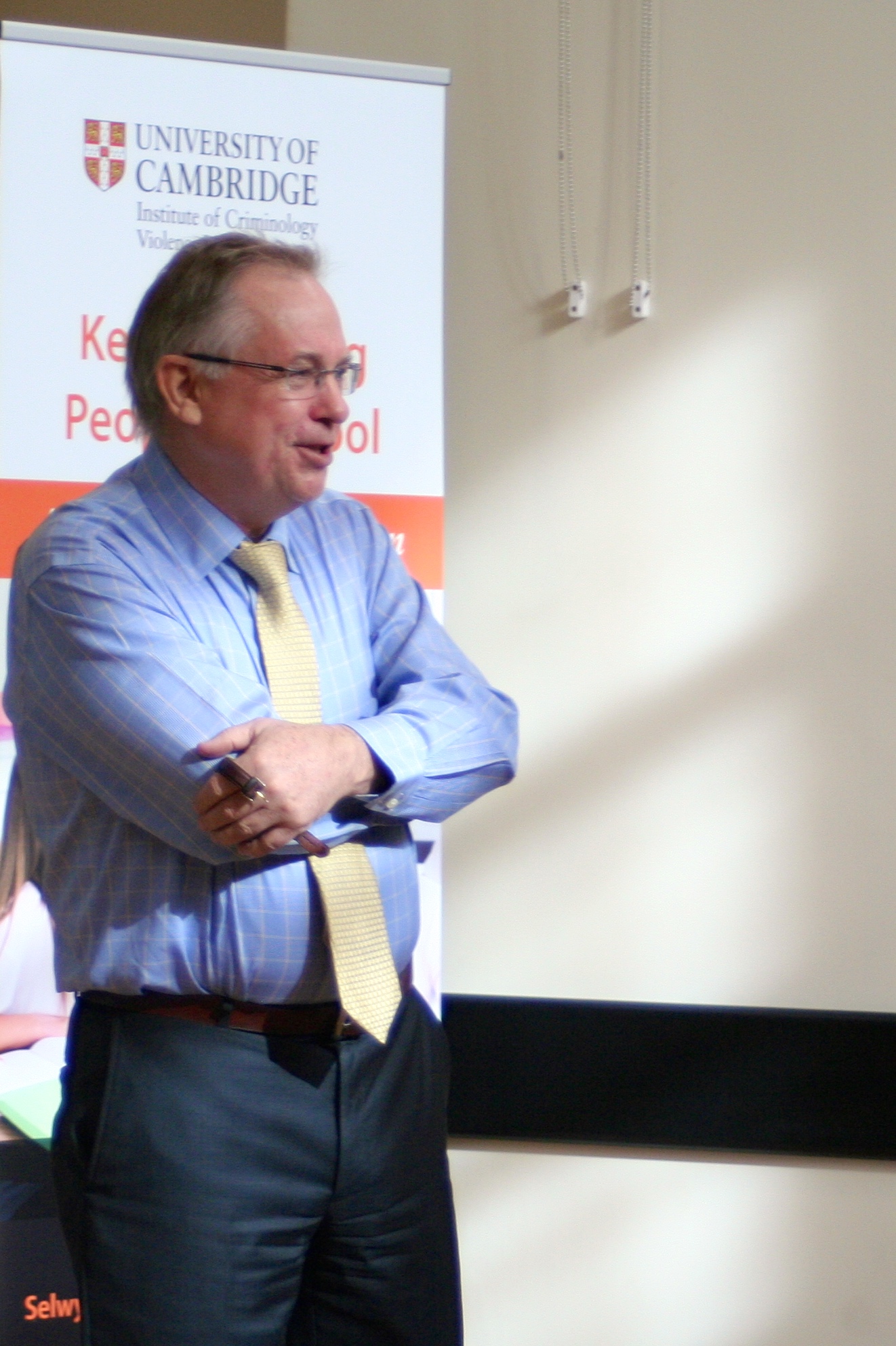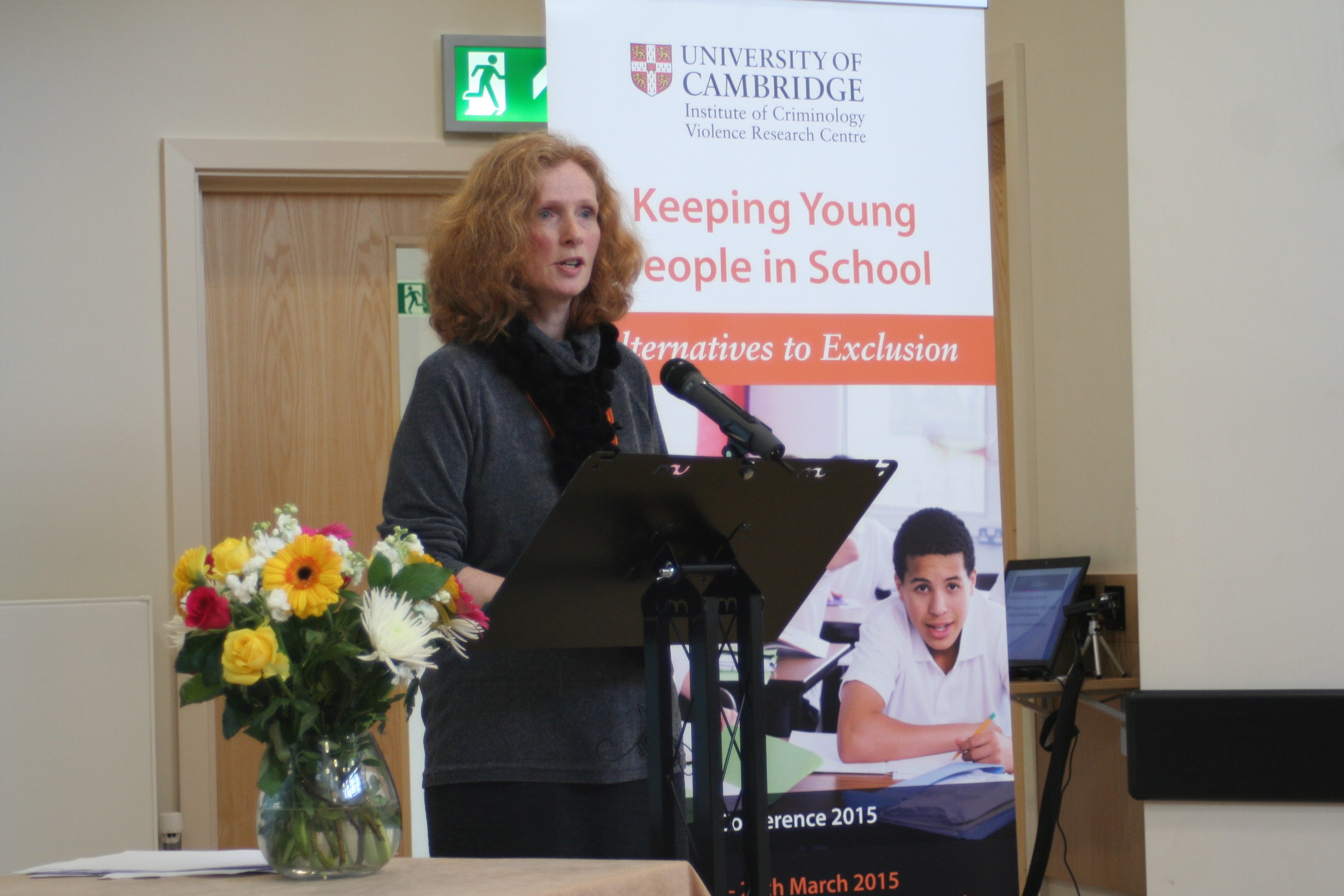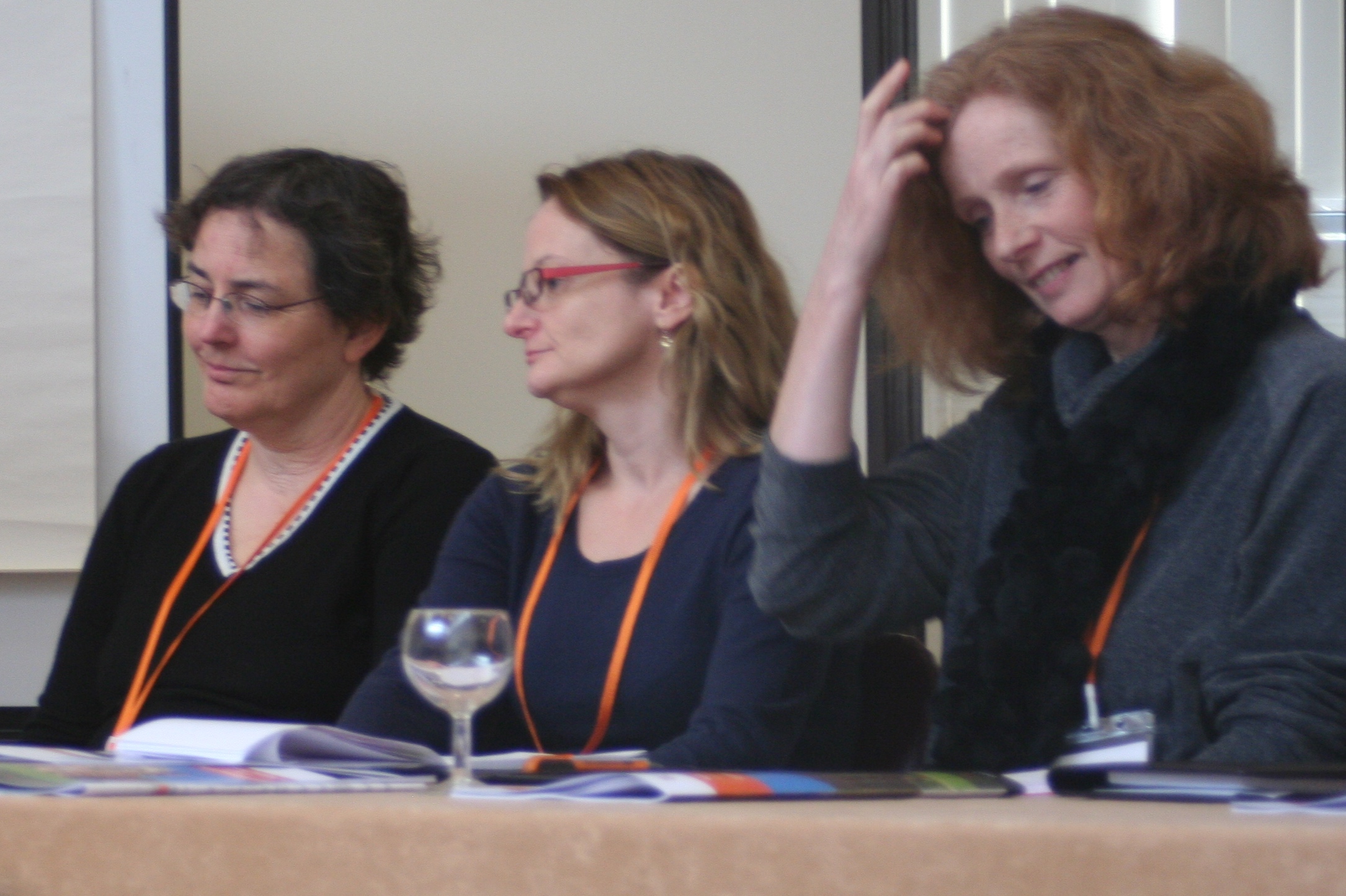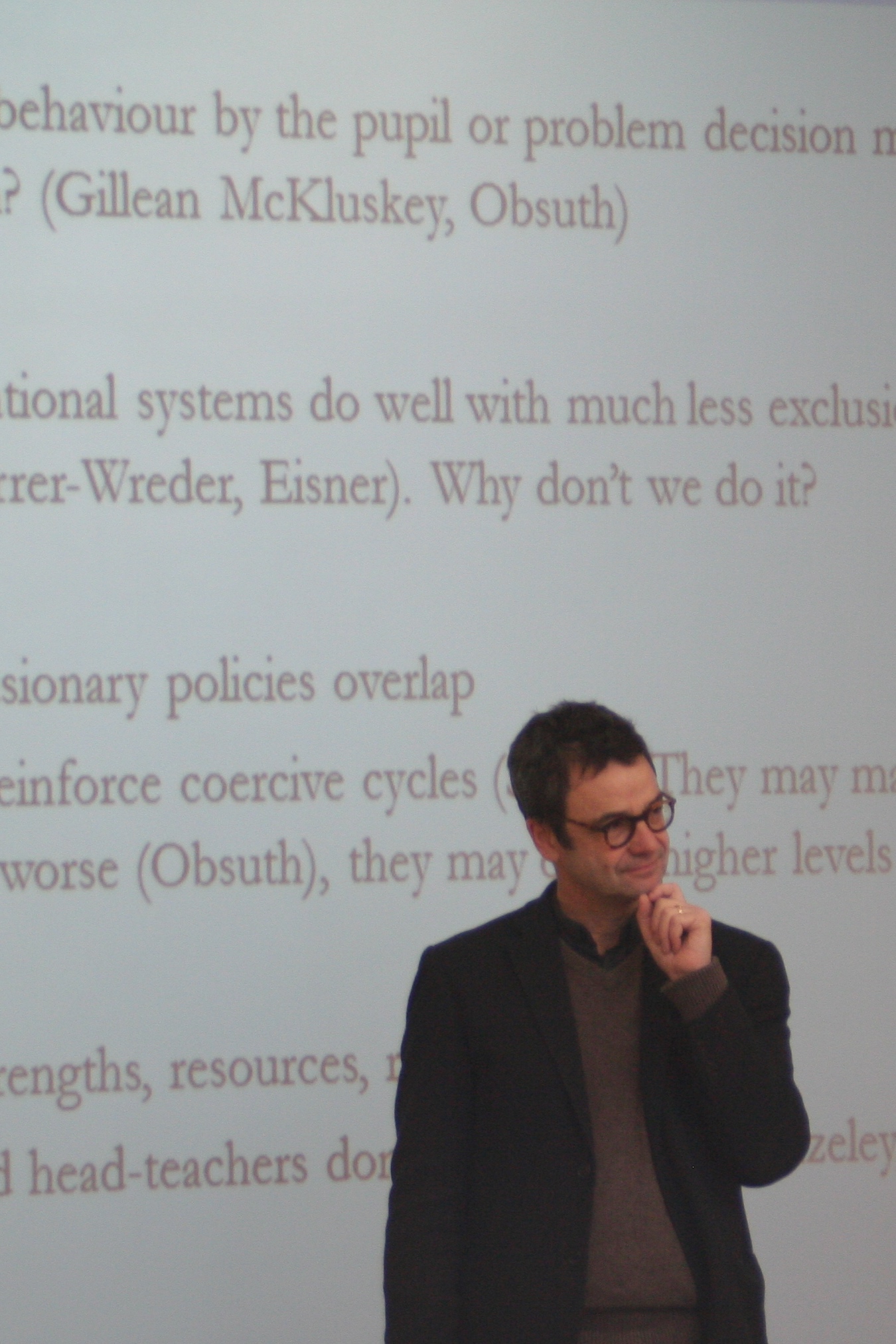LEIP Conference Summary

Conference Summary
Young people who experience school exclusion are at greater risk of becoming NEET (Not in Education, Employment, or Training) and of spending time in prison in later life. This not only reduces their life quality, but is costly for society both socially and financially.
Our conference entitled 'Keeping Young People in School – Alternatives to Exclusion' was a two day conference held on the 26 th and 27th of March, 2015 at Selwyn College, Cambridge. We had a total of eighty-one attendees, including forty-eight researchers and academics, eight third-sector representatives, twenty-one government representatives (from the National Children’s Bureau, Ofsted, and local government), three teachers, and one police officer. Special guest speakers included Professor George Sugai, Dr Louise Gazeley, Dr Gillean McCluskey, Professor Manuel Eisner, Dr Laura Ferrer-Wreder, Professor Hayward and Dr Terje Ogden.
This conference brought together practitioners, researchers, and third-sector providers to facilitate cross-sectorial discussion regarding the mechanisms behind school exclusion. The conference featured panel discussions, presentations and smaller group debates where delegates situated exclusionary policies in a broader context of available strategies to target young people at risk of school exclusion.
During the morning of the first day of the conference Dr Gazeley and Dr McCluskey described the situation in the UK and Ireland and after a coffee break partners of the London Education and Inclusion Project (LEIP) described their role in the study. The LEIP is a collaborative project of the Greater London Authority, the charity Catch22 and the Institute of Criminology. It is financially supported by grants from the European Commission and the Education Endowment Foundation. LEIP is an evaluation of a 12-week-long intervention, Engage in Education – London (EiE-L), delivered by Catch22.

In the afternoon of day one Dr Ogden, Dr Ferrer-Wreder and Professor Sugai gave us an international perspective on alternative methods of addressing behavioural issues. Dr Ferrer-Wreder from Stockholm University and Dr Ogden from the University of Oslo would like disciplinary measures to be considered more systemically, adapting interventions to risk and each individual’s needs. However, school interventions won’t be enough; we need to adopt a broad approach based on parent management training, family interventions, and multisystem therapy. Though this approach is expensive and intensive it is necessary in dealing with a complex problem. Government support – especially the assistance of mental health services- is essential to validate and implement this approach systematically. There are practical problems relating to the implementation, ideological obstacles as well as financials and organisational challenges. When these issues are addressed we will be able to move away from a punitive and reactionary way of dealing with problem behaviour because such measures are not very effective.
 Professor Sugai from the University of Connecticut presented the School-wide Positive Behaviour Support (SWPBS), an approach to establishing the social culture and behavioural supports needed for all children in a school to achieve both social and academic success. SWPBS is not a packaged curriculum, but an approach that defines core elements that can be achieved through a variety of strategies. The core elements of SWPBS are integrated within organisational systems in which teams, working with administrators and behaviour specialists, provide the training, policy support and organisational supports needed for (a) initial implementation, (b) active application, and (c) sustained use of the core elements. (Horner, R. H., Sugai, G., & Anderson, C. M. (2010). Examining the evidence base for school--‐wide positive behavior support. Focuson Exceptonality, 42(8), 1--‐14.)
Professor Sugai from the University of Connecticut presented the School-wide Positive Behaviour Support (SWPBS), an approach to establishing the social culture and behavioural supports needed for all children in a school to achieve both social and academic success. SWPBS is not a packaged curriculum, but an approach that defines core elements that can be achieved through a variety of strategies. The core elements of SWPBS are integrated within organisational systems in which teams, working with administrators and behaviour specialists, provide the training, policy support and organisational supports needed for (a) initial implementation, (b) active application, and (c) sustained use of the core elements. (Horner, R. H., Sugai, G., & Anderson, C. M. (2010). Examining the evidence base for school--‐wide positive behavior support. Focuson Exceptonality, 42(8), 1--‐14.)
Day two of the conference was started off with Professor Hayward and Professor Eisner summarising the key messages from the previous day. All conference participants were then allocated to one of the three discussion sessions based on their pre-indicated preferences. Group one discussed ‘What are the practical alternatives to exclusion and what is necessary to implement them?’ group two discussed the statement ‘Are special strategies required for young people who exhibit the most challenging (aggressive/violent) behaviour?’ and the third group discussed ‘Does school exclusion marginalise the already marginalised?’
All conference participants were then allocated to one of the three discussion sessions based on their pre-indicated preferences. Group one discussed ‘What are the practical alternatives to exclusion and what is necessary to implement them?’ group two discussed the statement ‘Are special strategies required for young people who exhibit the most challenging (aggressive/violent) behaviour?’ and the third group discussed ‘Does school exclusion marginalise the already marginalised?’
 Dr McCluskey from the University of Edinburgh pointed out that we know a lot about what disciplinary practices work, the problem is that we have been ‘choosing our truths’…and so missing essential opportunities. The Restorative Approach (RA) can work on the school climate and engage everyone to get actively involved with sustained attention. She emphasised that this is not about bad teachers; they do not guide the exclusion, but work their best to help pupils. Rates of exclusion have decreasing, but unlawful exclusion is still happening and need to be dealt with on a national level. The most common reason for exclusion is not violence, but mental health difficulties, physical or learning disabilities, substance abuse, domestic abuse, parent out of work, poor housing, teenage parenthood, etc. Young people who have five or more of these makes it thirty-eight times more likely to lead to exclusion.
Dr McCluskey from the University of Edinburgh pointed out that we know a lot about what disciplinary practices work, the problem is that we have been ‘choosing our truths’…and so missing essential opportunities. The Restorative Approach (RA) can work on the school climate and engage everyone to get actively involved with sustained attention. She emphasised that this is not about bad teachers; they do not guide the exclusion, but work their best to help pupils. Rates of exclusion have decreasing, but unlawful exclusion is still happening and need to be dealt with on a national level. The most common reason for exclusion is not violence, but mental health difficulties, physical or learning disabilities, substance abuse, domestic abuse, parent out of work, poor housing, teenage parenthood, etc. Young people who have five or more of these makes it thirty-eight times more likely to lead to exclusion.
Dr Gazeley from the University of Sussex talked to an urgent need for greater recognition of how inequalities are produced within as well as outside school systems. In trying to understand the impact of school exclusion on socially and educationally marginalised groups, exclusion as an outcome has to be located within an understanding of exclusion as a process. Exclusion from school needs to be understood in the context of educational policy. While there have been improvements over the last decade and it is possible to identify examples of good practice, the development of consistent good practice needs to be recognised as a major equity challenge. The systemic change required will only be possible as a result of strong leadership from the top.
from the University of Sussex talked to an urgent need for greater recognition of how inequalities are produced within as well as outside school systems. In trying to understand the impact of school exclusion on socially and educationally marginalised groups, exclusion as an outcome has to be located within an understanding of exclusion as a process. Exclusion from school needs to be understood in the context of educational policy. While there have been improvements over the last decade and it is possible to identify examples of good practice, the development of consistent good practice needs to be recognised as a major equity challenge. The systemic change required will only be possible as a result of strong leadership from the top.
 Professor Hayward from the Education Department at the University of Cambridge explained how not doing something about ‘the problem’ is the actual problem. The problem needs to be addressed on a political level, but policy makers do not like implementing solutions to complex problems. Additionally, political shifts take time to implement and have an effect. School exclusion cannot be de-politicised, to tackle this issue schools need to focus on them, the problems is complex and there are no silver bullets. We must agree on the problem before we can find solutions; the most difficult part is taking action. At the end, he also emphasised that Randomised Control Trials are not the only alternative to understanding the impact of interventions aimed at reducing school exclusion.
Professor Hayward from the Education Department at the University of Cambridge explained how not doing something about ‘the problem’ is the actual problem. The problem needs to be addressed on a political level, but policy makers do not like implementing solutions to complex problems. Additionally, political shifts take time to implement and have an effect. School exclusion cannot be de-politicised, to tackle this issue schools need to focus on them, the problems is complex and there are no silver bullets. We must agree on the problem before we can find solutions; the most difficult part is taking action. At the end, he also emphasised that Randomised Control Trials are not the only alternative to understanding the impact of interventions aimed at reducing school exclusion.
Professor Eisner from the Institute of Criminology and the University of Cambridge focused on the macro-level context of school exclusion.  Firstly, we have to decide whether it is the practice of exclusion that needs amending or the young person’s behaviour. If we want to do something about behaviour we target the person, if it is the practice that needs amending we target the school. Data suggest that 5% of students in secondary school are likely to be excluded for disciplinary reasons, this 5% of students accounts for 90% (approx.) of all disciplinary measures utilised by schools in the UK. We need to take this evidence seriously. However, the problem is complex and not just a matter of misbehaviour, some schools is more prone to punish so a shift in the ethos of these schools is necessary. In order to understand school exclusion we need to look at it systematically, including children's views as well as parents, teachers, mental health practitioners, etc.
Firstly, we have to decide whether it is the practice of exclusion that needs amending or the young person’s behaviour. If we want to do something about behaviour we target the person, if it is the practice that needs amending we target the school. Data suggest that 5% of students in secondary school are likely to be excluded for disciplinary reasons, this 5% of students accounts for 90% (approx.) of all disciplinary measures utilised by schools in the UK. We need to take this evidence seriously. However, the problem is complex and not just a matter of misbehaviour, some schools is more prone to punish so a shift in the ethos of these schools is necessary. In order to understand school exclusion we need to look at it systematically, including children's views as well as parents, teachers, mental health practitioners, etc.
In conclusion, this conference found that the areas that need the most focus are; school leadership to create an ethos of inclusion, a greater focus on the emotional well-being of the young person in teachers' Initial Teacher Training (ITT), government driven policy-change and an integration of the tiered-framework logic of school behaviour support. Academics have done extensive research in the field; the main challenge now is to convince policy-makers of the long-term economic gains associated with these improvements. In sum, we need a toolkit that unifies theory and practice. However, there is still significant research needed to isolate exactly what aspect of an intervention works for young persons whom exhibit specific risk factors. Further research will enable researchers to target interventions more effectively.
